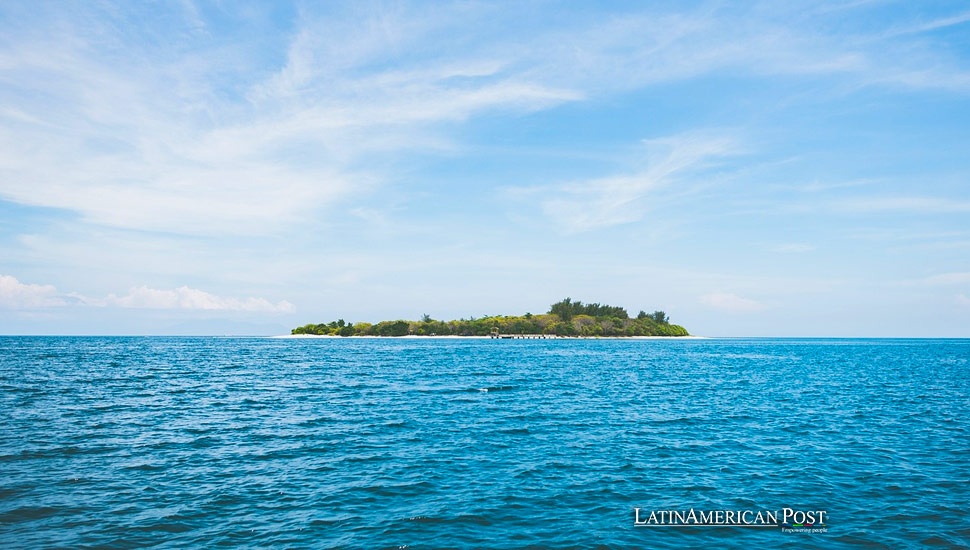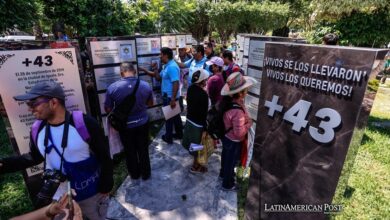The Intriguing Mystery of the Vanishing of Isla Bermeja in the Gulf of Mexico

Once charted on sixteenth-century maps, Isla Bermeja’s disappearance fuels controversies and conspiracy theories amid oil-rich Gulf of Mexico negotiations, echoing geopolitical tensions and environmental concerns across Latin America.
First noted in a detailed Spanish compendium of the world’s islands in 1539, the enigmatic Isla Bermeja has captivated the imaginations of sailors, fishermen, and politicians for centuries before it seemingly vanished from existence around the turn of the 21st century. Located at coordinates 22°33’N, 91°22’W—a place where explorers now encounter nothing but expansive, open waters of the Gulf of Mexico, approximately 110 kilometers northeast of the Yucatán Peninsula—this phantom islet symbolizes intrigue and mystery.
The Strategic Importance of Bermeja
The historical presence of Bermeja on numerous nautical charts and maps dating back to the 16th century highlighted its role not merely as a cartographic curiosity but as a strategic territory. Its importance dramatically surged during the high-stakes 2008-2009 negotiations between Mexico and the United States over control of lucrative oil fields beneath the Gulf. Bermeja’s specific location was pivotal, as its acknowledgment could significantly extend Mexico’s Exclusive Economic Zone (EEZ), potentially granting them access to oil reserves estimated at over 22.5 billion barrels.
Geographer and island specialist Israel Baxin Martínez discussed the island’s critical role in these negotiations. “The absence of Bermeja from modern maps and satellite imagery resulted in a substantial economic and territorial loss for Mexico, especially in an era where oil revenues were crucial for the national economy,” Martínez explains.
The disappearance of Isla Bermeja has inspired a range of theories. Some scientists propose that natural phenomena such as shifting oceanic tectonic plates or rising sea levels might have submerged the island, a fate not uncommon for other islands in regions like Hawaii and Japan. Alternatively, the island’s depiction in early cartographic records might have resulted from errors, with no actual landmass ever existing at the specified coordinates.
The mystery of Isla Bermeja is not just a matter of geographical curiosity. It has sparked widespread conspiracy theories, with many residents along the Yucatán coast and political figures speculating that the island was deliberately obscured or destroyed by foreign powers, particularly the United States. This suspicion was amplified in November 2008 when several senators from Mexico’s National Action Party suggested that the U.S. might have played a role in the island’s disappearance to secure an advantage in Gulf oil negotiations.
Historical Context and Geographical Errors
Martínez also points to historical instances of geographical errors, where islands like the Revillagigedo, located southwest of Baja California, have been misrecorded or confused in various nautical charts over the centuries. “Bermeja’s case is particularly challenging because it straddles the line between myth and reality, further complicated by its sporadic appearances in historical records and the high stakes involved,” he notes.
Despite significant interest and debate, few concrete steps have been taken to resolve the matter definitively. Since 2009, only a handful of government-led and independent expeditions, equipped with the latest technology and led by renowned experts, have sought to uncover the truth about Bermeja. All returned with the same conclusion: no landmass exists at the designated coordinates, and no credible evidence supports that it ever did. These expeditions, while unsuccessful, demonstrate the seriousness with which the disappearance of Isla Bermeja is being taken.
Contemplating on Bermeja’s cultural impact, Martínez suggests that the island’s tale is not just about territorial disputes or economic calculations. It delves into a deeper, more introspective part of the human psyche: our preoccupation with what we’ve lost, or perhaps what we’ve never truly had. This obsession often overshadows our ability to appreciate and utilize the resources currently at our disposal.
The narrative of Isla Bermeja intertwines with broader themes relevant across Latin America, where historical grievances and losses often shape national identities and policies. In Mexico, as in many other places, the myths and legends of lost territories continue to fuel nationalistic fervor and serve as potent symbols in political and environmental debates. The disappearance of Isla Bermeja, for instance, has been used by some to highlight the need for stronger territorial protections, while others see it as a reminder of the country’s vulnerability to external pressures.
The Persistent Mystery of Isla Bermeja
As the mystery of Isla Bermeja persists in the Mexican collective memory, it serves as a poignant reminder of the complexities of geopolitical aspirations, the elusive nature of truth, and the power of myth in shaping our understanding of the world. The saga of this vanished island transcends its geographical origins to become narrative rich with implications about national identity, environmental stewardship, and the human quest for control and certainty in an uncertain world.
Also read: Mexico’s Puerto Vallarta Seeks to Become Beacon of LGBTI Inclusion in Latin America
This story of Bermeja, with its layers of history, mystery, and political intrigue, continues to captivate scholars, politicians, and ordinary citizens alike. It encourages a deeper reflection on the narratives we accept as truth and the realities we choose to question or ignore. In exploring the tale of this phantom island, we confront not only the physical realities of our world but also the deeper truths about the human condition and our perpetual struggle to define and defend what we believe to be rightfully ours.





